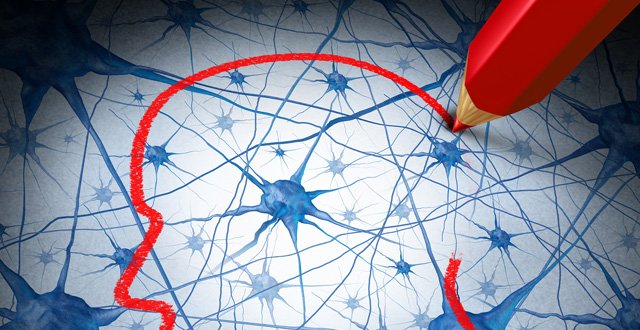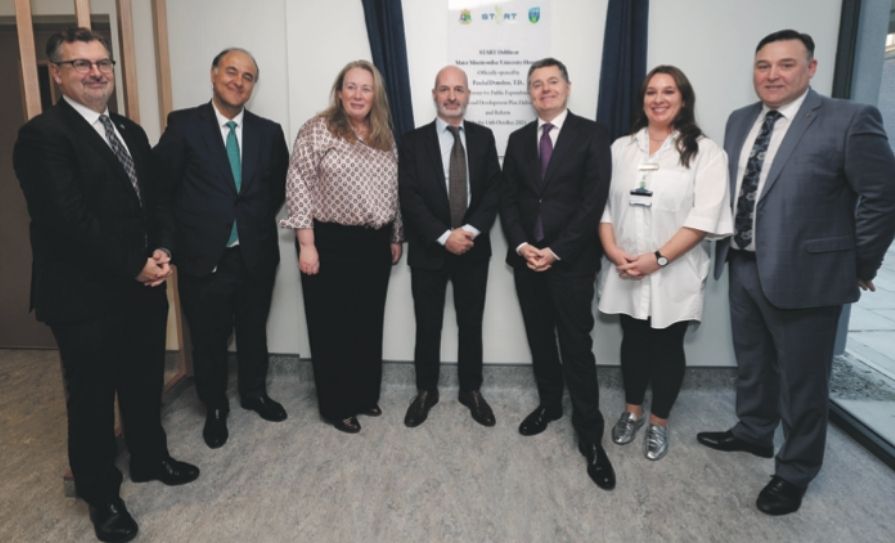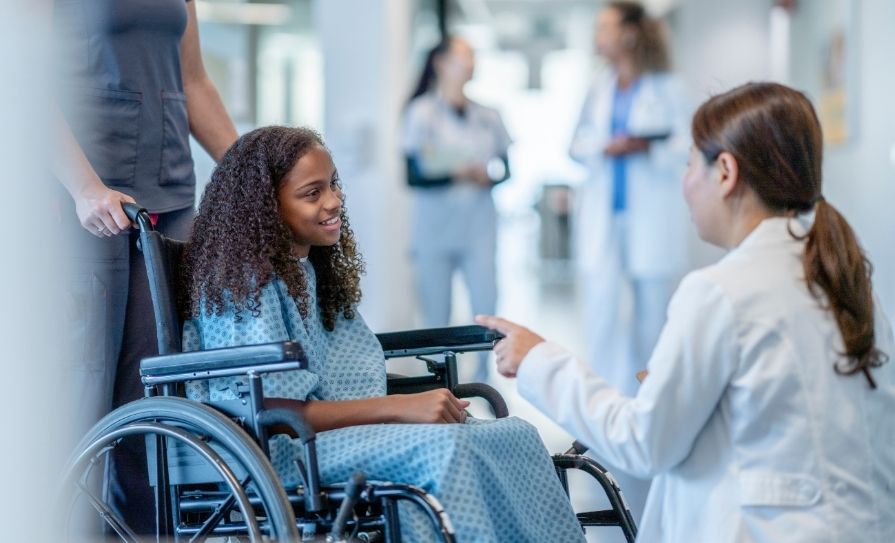An outline of how the novel coronavirus will impact on neurological care
The Covid-19 pandemic has radically altered the delivery of care for those with neurological conditions. In this new era, social distancing is likely to be in place for the foreseeable future, and adjustments to how it is provided for the coming 12 months are now essential. Although these changes are necessary, we must also ensure that diagnostics can be undertaken in a timely manner, that care is convenient and safe for the patient and their families, that healthcare professionals are appropriately supported, and that the risk of contagion is mitigated.
Re-establishing clinical care will be challenging. The capacity across neurological services has been significantly curtailed, both due to illness (Covid-19-related) and redeployment of NCHD and nursing staff; the requirement for social distancing within outpatient settings; and the requirement for space that is physically separated from areas of the hospital that provide care for those with Covid-19.
While neurologists have recognised the importance of redeployment during the acute phase of the Covid-19 pandemic, it is now vital that frontline neurological services are reconstituted to provide delivery of essential neurological care, address the significant backlog in service provision, and ensure ongoing care for vulnerable populations. The need to reconstitute frontline neurological services particularly pertains to specialist nursing (motor neurone disease (MND), multiple sclerosis (MS), Parkinson’s disease, epilepsy and general neurology nurses), specialist registrars, and core clinical professionals (physiotherapy, occupational therapy, speech and language therapy, dietetics and psychology).
Most routine diagnostic services used by neurologists have been suspended. These include routing neuroimaging, neurophysiological assessment (EEG, EMG) and lumbar puncture. More intensive monitoring (ie, epilepsy monitoring units) has also been suspended as facilities have been redeployed for Covid-19 management.
Re-establishment of these services will uncover enormous backlogs, leading to long waiting lists for patients and ensuing stress for practitioners in managing the competing needs of an overwhelming number of urgent referrals. This will need to be recognised and mitigations will need to be planned in advance. This could include the purchase of professional services from highly-skilled colleagues working within the private sector for diagnostics such as neurophysiology, and a decision to prioritise those requiring epilepsy monitoring for surgery over other admissions for routine assessment/management.
We should also anticipate a significant backlog in provision of therapeutic interventions that normally occur as part of routine care, including the use of botulinum toxin for spasticity and headache management, the regular review of those using programmable devices (ie, vagal nerve stimulation for epilepsy, and deep-brain stimulation for those with Parkinson’s disease).
Mitigation of these backlogs will be more challenging as they will require face-to-face engagement, and appropriate social distancing arrangements will be required.
Semi-elective admissions have also been suspended as an acute response to the pandemic — for example, those patients with dysphagia requiring gastrostomy insertion — and will need to be prioritised as Covid-19-free facilities are recommissioned. Patients will need to be assured that hospitals are safe, and that the risks of not treating are greater than the risks of hospital admission.
Outpatient neurology
General practitioners have had reduced footfall, and it is likely that a large number of patients with neurological symptoms have not yet been referred. A triage system will be required to mitigate a large expansion of existing waiting lists.
Provision of waiting list initiative clinics should be considered. However, this will have implications for the anticipated reduced access to outpatient space for some hospitals, for social distancing, and for access to diagnostic services for which there is already a considerable backlog.
Additional clinic facilities are likely to be required — many hospitals are already seeking space outside of the usual hospital settings to facilitate the need for additional clinics with appropriate social distancing.
Another likely approach will be the use of telehealth systems. The HSE has already recognised the need for telemedicine and has licensed a new platform for directly-funded HSE hospitals (‘Attend Anywhere’). Other hospitals have engaged directly with service providers (ie, T-PRO). These platforms have the capability to provide confidential videoconferencing for remote consultations and have already been embraced in many centres.
From a neurology perspective, remote care using videoconferencing, and under the correct circumstances, can be associated with outcomes comparable with regular outpatient visits, but with much greater efficiency. Telemedicine can also be used to deliver home-based interventions, such provision of neurorehabilitation. This could be achieved by telephone-based/telelinked consultation prior to face-to-face interviews, but will require additional resources.
Specialist neurology clinics
Headache/migraine represents 30 per cent of all referrals to neurology, and a significant proportion of those attending emergency departments. While these referrals have reduced during the crisis, and those with chronic headache/migraine have not been attending outpatient departments, these numbers are likely to increase once the lockdown has lifted. Sláintecare has funded a pilot programme for headache; however, all Sláintecare projects have been suspended in response to the Covid-19 emergency. Reinstatement of this programme for headache with some adjustment would be beneficial. Headache/migraine management would be well suited to the provision of a telehealth-provided service, and could be developed as a pilot programme and reworked as part of the Sláintecare programme. Ongoing headache management could be provided by telelink, as could new referrals where clinical examination may not be essential.
For vulnerable groups with high levels of disability requiring ongoing neurological support (including secondary progressive multiple sclerosis (SPMS), Parkinson’s disease, recent stroke and other acquired disabilities with high levels of burden), it will be important to re-establish outpatient clinics, although many will prefer to continue to cocoon and will be reluctant to attend outpatient departments unless they can be assured of their safety.
For those with chronic illness (ie, SPMS), telehealth approaches could be initiated with support from local hospital IT systems. Remote telephone-based clinics could provide a triage system for those who cannot avail of video-linked services, and those requiring face-to-face review would be provided with spaced-out appointments in an appropriate outpatient facility.
However, significant buy-in from patients and their families will be required, and given the limitations in broadband across the country and the relative novelty of telehealth in delivery of care in Ireland, a system to ensure that the quality of care is not compromised must be considered.
For those with neurological conditions requiring immunomodulatory therapies (relapsing-remitting MS, myasthenia gravis, inflammatory neuropathies, vasculitis, etc), surveillance of disease activity (neuroimaging in the case of MS) must be prioritised — requiring appropriate access to imaging facilities through the NTPF, if necessary.
Advice regarding whether to commence on/continue specific disease-modifying therapies will require a decision-making strategy that includes a risk/benefit assessment over a 12-month rather than a three-month period. This is likely to lead to modifications in the advice provided during the lockdown for those with MS (ie, decisions regarding commencing treatment with cladribine/alemtuzumab, which have been discouraged at the onset of the pandemic).
For this cohort of patients, re-establishment of outpatient facilities will require both assurances of safety, and increased precautions- (ie, face masks and some form of personal protective equipment (PPE)). And while some of these patients can be managed by tele– or video-link, face-to-face meetings will be required. Safe access to Covid-19-free facilities providing infusions has been possible during the acute crisis, and needs to be continued in the longer term.
For those with complex epilepsies, and those with intellectual disabilities requiring neurological input, the epilepsy programme benefits from an integrated network of centres and an electronic patient record. Most centres already provide outreach services to care facilities and these can be substantially augmented using telelinks. Going forward, given the difficulties encountered in residential facilities, attendance will need to be closely monitored and PPE equipment should be provided where appropriate.
Epilepsy services for existing patients are well suited to the development of video links and telehealth, although the same concerns apply regarding broadband access and familiarity with e-health technologies for patients and their families. For new patients, diagnostic services will be a challenge, particularly imaging and EEG, as there will be a backlog. For those requiring inpatient monitoring, contingencies will be required to ensure expedited admission for pre-surgical work-up, and for those for whom accurate diagnosis is essential to good clinical management.
Services such as vagal nerve stimulation can be provided in an outpatient setting with appropriate triage and PPE equipment.
One benefit of the Covid-19 pandemic has been the combination of services across the public and voluntary sectors for MND and related conditions. An integrated outreach service combining nurses and doctors operates at Beaumont, Cork and Galway hospitals and the Irish Motor Neurone Disease Association (IMNDA) has been in place and functioning as an integrated service over the past two months, with weekly virtual meetings, during which all patients requiring active care are discussed by a multidisciplinary team. A HRB Covid-funded project will enable exploration of the utility of telehealth to maximise delivery of efficient care.
However, face-to-face clinics must continue and new diagnoses will require urgent review. The backlog in diagnostic testing will be a significant difficulty for these patients, and prioritisation will be required to ensure timely diagnoses and access to inpatient facilities where necessary.
Multidisciplinary clinics
Neurological care is by definition a multidisciplinary endeavour. The Covid-19 crisis has had a devastating effect on the delivery of care through multidisciplinary clinics. Those expert clinical professionals who have been deployed to address the crisis will need to be reassigned to their original posts.
Reinstatement of these multidisciplinary clinics will also require a major change in practice. Adjustments to the clinic space will be required — perhaps where patients remain in a consulting room and the team moves from room-to-room with appropriate PPE. Pre-assessment using telehealth devices could assist in maximising the time spent in the clinic by providing information about which clinical professional engagement should be prioritised. The common pre-Covid-19 practice of patients spending 70 per cent of clinic time in the waiting room and only 30 per cent of their time with members of the team is no longer viable.
High-quality video links can also deliver multidisciplinary care, with facilities for a number of healthcare professionals to engage simultaneously with the patient, facilities for group discussions, and the ability of individual professionals to guide patients through neurorehabilitation programmes.
Interactions between hospital and community services
Covid-19 has had a major impact of the availability of community-based services for those with chronic neurological conditions. Many community-based healthcare professionals have been redeployed to screening/contact-tracing services. Patients have also been reluctant to engage with services because of the perceived risk of contagion. Patients and their families will need to be reassured that essential visits from healthcare professionals will not place them at risk. This will require ongoing engagement between hospital outreach services and the governance structure surrounding community services.
In summary, the challenges of the Covid-19 pandemic also present opportunities to embrace new technology and address some of the inefficiencies in our current delivery of care.
With sufficient planning, the principles of delivering high-quality multidisciplinary neurological care in a timely manner as close to the patient’s home as possible can still be attained with forward planning, appropriate prioritisation of those in greatest need, and additional resources to anticipate and address the backlogs.













Leave a Reply
You must be logged in to post a comment.